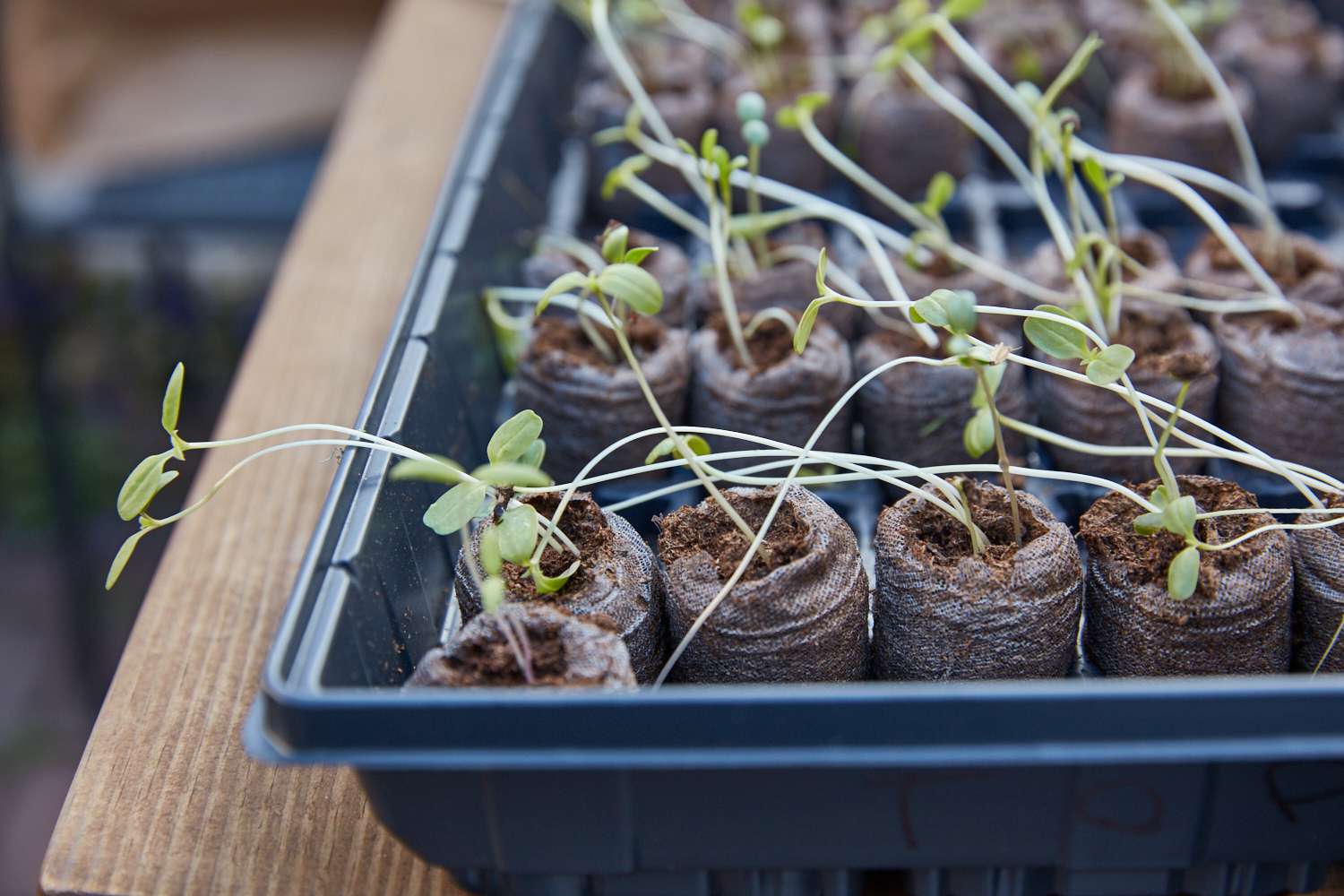Home>Gardening Tips and Tricks>How To Fix Fertilizer Stripes


Gardening Tips and Tricks
How To Fix Fertilizer Stripes
Modified: February 10, 2024
Learn how to solve the problem of fertilizer stripes and achieve healthy plant growth with our expert tips and techniques for problem-solving.
(Many of the links in this article redirect to a specific reviewed product. Your purchase of these products through affiliate links helps to generate commission for Chicagolandgardening.com, at no extra cost. Learn more)
Table of Contents
Introduction
Welcome to our comprehensive guide on how to fix fertilizer stripes. If you’re a gardener or farmer, you may have come across the issue of fertilizer stripes in your crops or plants. Fertilizer stripes refer to the uneven distribution of nutrients in the soil, resulting in visible lines or bands of different colored vegetation between rows or areas where fertilizer has been applied.
This phenomenon can be frustrating and detrimental to the health and growth of your plants. Therefore, it’s essential to understand the causes and effects of fertilizer stripes and learn how to identify and fix them to ensure optimum plant health and yield.
In this article, we will delve into the various aspects of fertilizer stripes. We’ll start by exploring what fertilizer stripes are and the factors that contribute to their formation. Next, we’ll discuss the detrimental effects of fertilizer stripes on plant growth and overall crop productivity.
Furthermore, we’ll provide you with practical guidance on how to identify fertilizer stripes in your garden or fields. Finally, we’ll outline the steps you can take to fix fertilizer stripes and prevent their reoccurrence.
By the end of this guide, you’ll have the knowledge and tools necessary to address the issue of fertilizer stripes effectively, promoting healthy plant growth and maximizing the yield of your crops. Let’s get started!
What Are Fertilizer Stripes?
Fertilizer stripes are visible lines or bands of different colored vegetation that occur in fields or gardens where fertilizers have been applied. These stripes are a result of uneven distribution of nutrients in the soil, leading to uneven growth and nutrient uptake by the plants. The term “stripes” is used because the bands of different colored vegetation create a striped pattern when viewed from a distance.
When fertilizers are applied, they typically contain a mixture of essential nutrients such as nitrogen, phosphorus, and potassium, as well as other micronutrients. These nutrients play a vital role in supporting plant growth and development. However, fertilizers need to be evenly dispersed throughout the soil for optimal absorption by the plants’ root systems.
Several factors can contribute to the formation of fertilizer stripes. One common cause is improper application technique. If the fertilizer is not spread evenly across the field or garden, it can result in concentrated areas of nutrient-rich soil and areas with inadequate nutrient availability. This creates the distinct bands of different-colored vegetation as the plants in the nutrient-rich areas grow more vigorously, while those in nutrient-deficient areas struggle to thrive.
Moreover, soil composition can also play a role in the formation of fertilizer stripes. Variations in soil texture, organic matter content, and pH levels can affect the movement and absorption of nutrients. For example, if there are areas with compacted soil or high clay content, the nutrients may not be able to disperse evenly, leading to the development of fertilizer stripes.
Additionally, factors like irrigation practices, rainfall patterns, and soil drainage can influence nutrient movement in the soil, further contributing to the formation of fertilizer stripes. If water tends to accumulate in certain areas or if there are drainage issues, nutrients may be leached away or concentrated in specific regions, resulting in uneven nutrient distribution and the appearance of stripes.
In summary, fertilizer stripes are the visible manifestation of uneven nutrient distribution in the soil. They occur when fertilizers are not applied correctly or when soil conditions impede the proper movement and absorption of nutrients. Understanding the causes of fertilizer stripes is key to implementing effective solutions and achieving healthy, uniform plant growth. In the next section, we will explore the effects that fertilizer stripes can have on your plants and crops.
Causes of Fertilizer Stripes
Several factors can contribute to the formation of fertilizer stripes in fields or gardens. Understanding these causes is essential for effectively addressing and preventing the issue. Let’s explore some of the common causes of fertilizer stripes:
- Improper Application Technique: One of the primary causes of fertilizer stripes is improper application technique. Uneven spreading of fertilizers across the field or garden can lead to the formation of concentrated areas of nutrients and areas with inadequate nutrient availability. This uneven distribution creates the distinct bands of different-colored vegetation.
- Soil Composition: Variations in soil composition, including texture, organic matter content, and pH levels, can influence the formation of fertilizer stripes. Soil properties such as compacted soil or high clay content can impede the movement and absorption of nutrients, resulting in uneven nutrient distribution.
- Water Movement and Drainage: Factors related to water movement and soil drainage can also contribute to fertilizer stripes. If there are areas with poor drainage or water tends to accumulate in certain regions, nutrients may be leached away or concentrated, leading to uneven nutrient distribution and the appearance of stripes.
- Equipment and Application Errors: Inaccurate calibration or malfunctioning equipment can lead to inconsistent and uneven application of fertilizers. This can result in the formation of fertilizer stripes as some areas receive excessive amounts of nutrients while others receive insufficient amounts.
- Inconsistent Irrigation: Inadequate or inconsistent irrigation practices can cause fertilizer stripes to develop. Insufficient watering can hinder nutrient uptake by the plants, while excessive watering can leach away nutrients or cause uneven distribution throughout the soil.
It’s crucial to recognize and address the underlying causes of fertilizer stripes to effectively rectify the issue. By identifying the specific factors contributing to the uneven distribution of nutrients in the soil, appropriate corrective measures can be implemented to promote uniform plant growth and optimize crop productivity.
Now that we have explored the causes of fertilizer stripes, let’s move on to the next section to learn about the effects that fertilizer stripes can have on your plants and crops.
Effects of Fertilizer Stripes
Fertilizer stripes can have detrimental effects on plants and crops. Understanding these effects is crucial for assessing the severity of the issue and implementing appropriate corrective measures. Let’s explore some of the common effects of fertilizer stripes:
- Nutrient Imbalances: Fertilizer stripes can create nutrient imbalances in the soil. The areas with concentrated nutrients may experience excessive nutrient uptake by the plants, leading to nutrient toxicity. On the other hand, the areas with inadequate nutrient availability may suffer from nutrient deficiencies, impairing plant growth and development.
- Stunted Growth: Plants growing in areas with insufficient nutrient availability due to fertilizer stripes may exhibit stunted growth. Limited access to essential nutrients can hinder the plant’s ability to develop properly, resulting in smaller plants with weaker root systems and reduced overall vitality.
- Poor Yield: The occurrence of fertilizer stripes can significantly impact crop yield. Uneven nutrient distribution can lead to variability in plant growth and productivity. Plants in nutrient-rich areas may produce higher yields, while plants in nutrient-deficient areas may have reduced productivity, resulting in an overall decrease in crop yield.
- Reduced Resilience to Stress: Plants growing in areas affected by fertilizer stripes may have reduced resilience to environmental stressors. Nutrient deficiencies or imbalances can make plants more susceptible to pests, diseases, and adverse weather conditions, further exacerbating the negative impact on plant health and crop yield.
- Poor Quality Produce: Fertilizer stripes can also affect the quality of the harvested produce. Nutrient imbalances can lead to abnormal growth patterns, malformed fruits or vegetables, and reduced nutritional value. This can have consequences on marketability and consumer satisfaction.
It is important to address the effects of fertilizer stripes to ensure optimal plant growth, maximize crop productivity, and maintain the quality of the harvested produce. By taking prompt action to correct the nutrient imbalances and promote uniform nutrient distribution, growers can mitigate the negative effects and better manage their farming or gardening operations.
Having explored the effects of fertilizer stripes, let’s move on to the next section to learn how to identify the presence of fertilizer stripes in your fields or gardens.
How to Identify Fertilizer Stripes
Identifying the presence of fertilizer stripes is crucial for effectively addressing the issue and implementing the appropriate corrective measures. Here are some key methods to help you identify fertilizer stripes:
- Visual Observation: One of the easiest ways to identify fertilizer stripes is through visual observation. Take a look at your fields or gardens from a distance and look for noticeable lines or bands of different colored vegetation. These lines may appear as darker or lighter patches, depending on the concentration of nutrients in the soil.
- Aerial Imagery: Aerial imagery or drone photography can provide a more detailed and accurate view of your fields or gardens. By capturing images from above, you can identify the distinct patterns of fertilizer stripes more easily. Aerial imagery can be especially useful for large-scale farming operations.
- Plant Health Assessment: Another way to identify fertilizer stripes is by assessing the health and growth of your plants. Compare the vigor and color of the vegetation in different areas of your fields or gardens. Plants in nutrient-rich areas may appear lush and vibrant, while plants in nutrient-deficient areas may exhibit stunted growth, yellowing of leaves, or other signs of nutrient deficiencies.
- Soil Testing: Conducting soil tests is a valuable tool for identifying the presence of fertilizer stripes and assessing nutrient levels in different areas of your fields or gardens. Soil testing measures the nutrient content and pH levels in the soil, allowing you to identify imbalances and areas with inadequate nutrient availability.
- Interpretation of Yield Maps: If you have access to yield maps from previous harvests, you can analyze the variations in crop yield across your fields. Low yield areas may indicate the presence of fertilizer stripes or other nutrient-related issues.
By utilizing a combination of visual assessment, aerial imagery, plant health evaluation, soil testing, and yield map analysis, you can effectively identify the presence of fertilizer stripes in your fields or gardens. This knowledge will enable you to take appropriate measures for rectifying the issue and ensuring optimal nutrient distribution for healthy plant growth and maximum crop productivity.
Now that we have explored how to identify fertilizer stripes, let’s move on to the next section where we’ll discuss the essential steps to fix this problem and prevent its reoccurrence.
Steps to Fix Fertilizer Stripes
Fixing fertilizer stripes requires a targeted approach to redistribute nutrients and promote uniform plant growth. Here are the essential steps to fix fertilizer stripes:
- Soil Testing and Analysis: Begin by conducting a comprehensive soil test to assess the nutrient levels and pH of the soil in your fields or gardens. This analysis will help identify the specific nutrient deficiencies or imbalances contributing to the formation of fertilizer stripes.
- Nutrient Application: Based on the soil test results, apply the appropriate fertilizers or soil amendments to address the nutrient deficiencies or imbalances. It is essential to ensure even and uniform distribution of the fertilizers across the affected areas. Calibrate your equipment properly and consider alternative application methods like banding or side-dressing to target specific areas.
- Proper Irrigation: Implement consistent and appropriate irrigation practices to support nutrient movement and absorption in the soil. Provide sufficient water to prevent drought stress and ensure proper nutrient uptake by the plants. Avoid overwatering, as it can lead to leaching and further nutrient concentration issues.
- Monitor and Adjust: Regularly monitor the progress of your plants and observe any changes in their growth and foliage color. Adjust your nutrient application rates as needed to maintain optimal nutrient levels in the soil. Continued monitoring will help prevent the reoccurrence of fertilizer stripes.
- Maintain Soil Health: Focus on improving overall soil health to promote nutrient availability and uptake by the plants. Implement practices such as cover cropping, crop rotation, and organic matter amendments to enhance soil structure, water retention, and nutrient cycling.
- Evaluate and Learn: After implementing corrective measures, evaluate the effectiveness of your actions by closely monitoring plant growth and productivity. Learn from the experience and make any necessary adjustments to your fertilization and management practices to prevent fertilizer stripes in future growing seasons.
Addressing fertilizer stripes requires a combination of careful nutrient management, proper irrigation, and overall soil health maintenance. By implementing these steps, you can rectify the issue and promote uniform plant growth, leading to healthier plants, improved crop yield, and enhanced farm or garden productivity.
Now that we’ve covered the steps to fix fertilizer stripes, let’s conclude this guide with a recap of the key points discussed.
Conclusion
Fertilizer stripes can be a frustrating and detrimental issue in fields and gardens, but with proper understanding and action, they can be effectively addressed and prevented. In this comprehensive guide, we have explored the various aspects of fertilizer stripes, from understanding what they are and the causes behind their formation, to the effects they can have on plant growth and crop productivity.
We have learned the importance of identifying fertilizer stripes through visual observation, aerial imagery, plant health assessment, soil testing, and yield map analysis. By identifying the presence of fertilizer stripes, growers can take targeted steps to rectify the issue and ensure optimal nutrient distribution for healthy plant growth.
We have discussed the essential steps to fix fertilizer stripes, including soil testing and analysis, proper nutrient application, appropriate irrigation, monitoring and adjustment, and maintaining soil health. By following these steps, growers can redistribute nutrients, promote uniform plant growth, and prevent the reoccurrence of fertilizer stripes.
It is crucial to remember that addressing fertilizer stripes requires a proactive approach, regular monitoring, and the willingness to learn from the experience. Implementing these strategies and techniques will not only improve plant health and crop yield but also contribute to sustainable farming and gardening practices.
As you embark on your journey to fix fertilizer stripes, remember to pay attention to the unique needs of your specific crops, soil type, and environmental conditions. By doing so, you can tailor your approach to effectively address fertilizer stripes and ensure the long-term success of your farm or garden.
We hope this guide has provided you with valuable insights and practical guidance on how to fix fertilizer stripes. With the knowledge gained, may you overcome this challenge and achieve healthy plants, bountiful harvests, and thriving fields or gardens.






